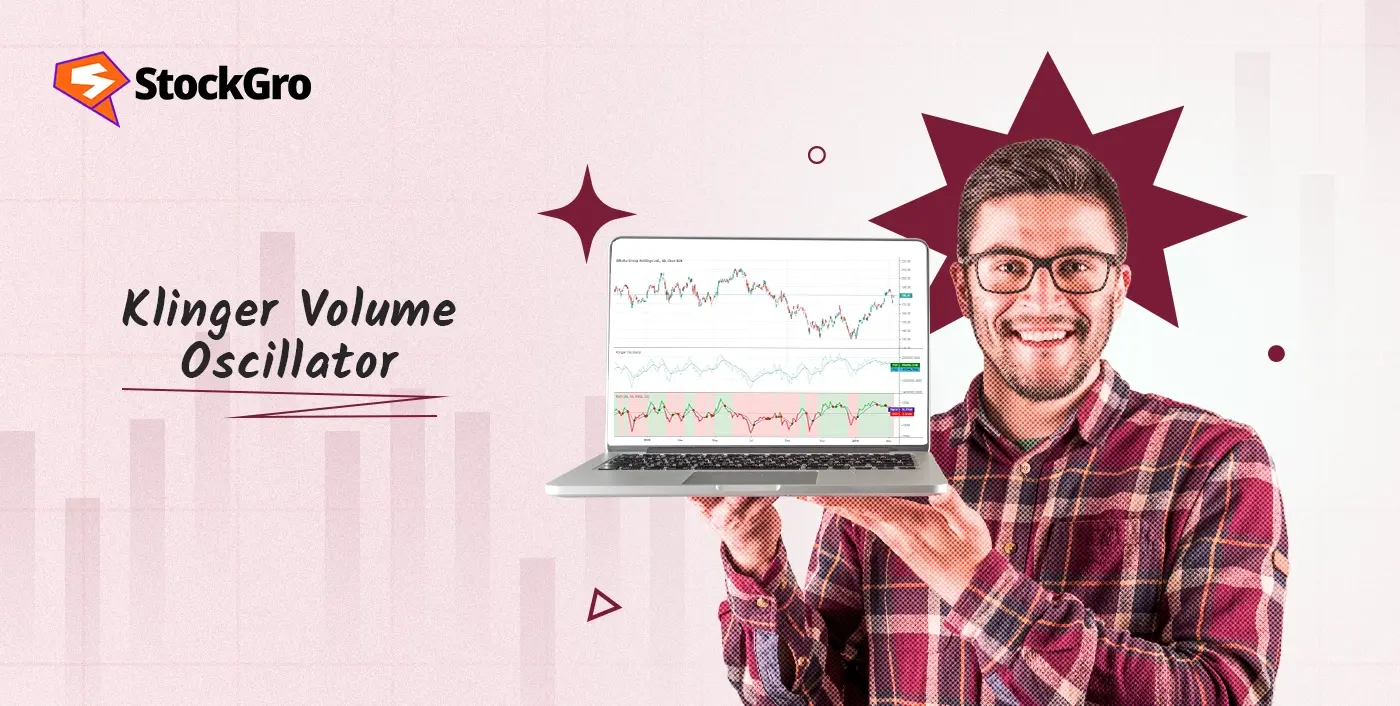
In trading, price movements often tell only part of the story. One can get the power behind those moves by looking at volume, but even volume is not without limits. It is here that the Cumulative Volume Delta (CVD) comes in, a potent order flow indicator that indicates the net buying or selling pressure in the market.
CVD can assist traders in verifying trends, identifying reversals, and enhancing timing by monitoring which party leads in the buying/selling process. This blog will discuss what CVD is, how it functions, and how to utilise it effectively.
What is Cumulative Volume Delta?
Cumulative Volume Delta estimates the difference between buying and selling volume and accumulates it over time.
- Volume indicator is usually tallied when traders purchase at the ask price of the security, which implies an aggressive buying behaviour.
- Selling volume at the offer price indicates aggressive selling.
This net difference can be accumulated over time when the traders build up a running total of market pressure through CVD.
- A rising CVD means buyers are consistently stronger.
- A falling CVD means sellers are dominating.
CVD finds its best application in futures, forex, and stock trading, where it helps with order flow studies by showing what goes on within the candles, and not just the price chart.
How Does Cumulative Volume Delta Work?
CVD begins with a volume delta per candle or bar computed as:
Volume Delta = Buy Volume − Sell Volume
With a positive outcome, the buyers were stronger at the time. In case of a negative, sellers held the advantage.
The cumulative component simply involves adding the delta in each period to last. This results in a straight line, and this line begins to either climb up or drop based on consistent purchases or sales.
Example:
- Bar 1: Buy Volume = 120, Sell Volume = 100 → Delta = +20
- Bar 2: Buy Volume = 90, Sell Volume = 110 → Delta = -20
- Cumulative total after Bar 2: +20 − 20 = 0
The CVD drawn line provides traders with a visual measure of both volume pressure and price movement, allowing for easy confirmation or divergence.
Cumulative Volume Delta Formula
The basic formula is:
CVD(t) = CVD(t−1) + [Buy Volume(t) − Sell Volume(t)]
Where:
- CVD(t) = Cumulative Volume Delta at the current time
- CVD(t−1) = Previous CVD value
- Buy Volume(t) = Total volume traded at the ask in the current period
- Sell Volume(t) = Total volume traded at the bid in the current period
CVD is automatically calculated and plotted on platforms that provide it (e.g. NinjaTrader, Sierra Chart or TradingView with some scripts). The traders need to interpret the results only.
How to Trade Using Cumulative Volume Delta
CVD for Trend Confirmation
A positive relationship between price and CVD increases the likelihood of continuity in that direction. For example:
- Uptrend Confirmation: The price has uptrend highs, CVD rises make uptrend highs → the buyers are powering the trend.
- Downtrend Confirmation: Price forms lower lows, and CVD is also falling steadily down → sellers are dominant.
This confirmation helps avoid false breakouts that occur with weak volume backing.
CVD for Spotting Divergences
The divergence is a way in which price and CVD move in opposite directions, and may indicate a flip in the future.
- Bearish Divergence: Prices are going up in higher highs, whereas CVD is in lower highs instead, which implies that buying pressure is weakening.
- Bullish Divergence: Price goes to lesser lows, CVD to greater lows; therefore, selling is losing its steam.
Divergences do not indicate an immediate reversal but are pointers towards tightening stops or being ready to expect a trend change.
CVD with Order Flow Tools
CVD becomes even more powerful when combined with other order flow indicators, such as:
- Footprint charts: Show trade volumes at each price level within a candle.
- Time & Sales data: Displays every executed trade and its size.
- Volume clusters: Highlight price zones where heavy buying or selling occurred.
When CVD is combined with analysis of the order flow taken as a whole, traders can more accurately determine opportunities to enter and exit trades with high probabilities.
Cumulative Volume Delta vs Volume Profile
While both CVD and Volume Profile deal with volume, they serve different purposes:
| Aspect | Cumulative Volume Delta (CVD) | Volume Profile |
| Purpose | Tracks net buying vs selling pressure over time, providing directional bias. | Shows where most trading activity occurred at specific price levels, revealing support and resistance zones. |
| Main Question Answered | Who is in control right now? | Where are market participants most active? |
| Best Use | To gauge real-time market sentiment and timing. | To identify key price areas for potential reversals or breakouts. |
| Combination Benefit | Time trades more accurately within key price levels found via Volume Profile. | Use alongside CVD for better trade precision. |
CVD serves to identify what the market controls at the given moment, whereas the Volume Profile serves to respond to where the market participants are having the most activity. Many traders widely use Volume Profile to identify major price levels, whereas CVD provides traders a method of timing their trades when they are in the price levels found using Volume Profile.
Pros and Cons of Using CVD
Pros
- Deeper market insight – Captures more than the overall volume of trades to indicate whether it is the buyers or sellers who are propelling the market.
- Validates price action – Can verify the power of a move or point out possible false breakouts.
- Versatile application – Applicable in a trading strategy or in an intraday scaling element, as well as long-term swing trading.
- Strong synergy with other tools – Powers well in combination with Volume Profile, footprint charts and other order flow indicators in order to receive more accurate entries.
Cons
- Data limitations – Needs platforms that give detailed ask/bid volumes data, and not all brokers offer this.
- Vulnerability in thin markets – During low liquidity measures, the readings may be very noisy and less dependable.
- Steeper learning curve – Properly identifying and reading divergences is a time-consuming and practice-intensive task, which means traders might not be able to read them properly at first.
Best Indicators to Combine with CVD
Cumulative Volume Delta becomes far more effective when used alongside other technical analysis indicators:
- Moving Averages – Direction of the trend and dynamic support/resistance..
- Relative Strength Index (RSI) – To verify overbought/oversold conditions along with CVD.
- VWAP (Volume Weighted Average Price) – This is used at institutional trading levels and mean reversion points.
- Volume Profile – To identify areas of high activity in combination with CVD over time.
- MACD – To align any momentum change with changes in buying/selling pressure.
Using a combination helps reduce false signals and improves decision-making.
Conclusion
The Cumulative Volume Delta (CVD) is positive when buying pressure has dominated the selling during the observed period. Simply put, the trading amount has been greater at the ask price than the bid price, which shows a greater aggressiveness among the buyers. This usually implies that market players are ready to shell out more to take positions, which will strengthen the gains towards an upward price. Nevertheless, a bullish CVD does not mean the market will rally; context is important, and traders would tend to combine it with price action to ensure validity of strength.
FAQs
The Cumulative Volume Delta (CVD) is positive when buying pressure has dominated the selling during the observed period. Simply put, trading amount has been greater at the ask price than the bid price, which shows a greater aggressiveness among the buyers. This usually implies that market players are ready to shell more in order to take positions, which will strengthen the gains towards an upward price. Nevertheless, a bullish CVD does not mean the market will rally, context is important, and traders would tend to combine it with price action to ensure validity of strength.
Delta is the difference between selling and purchasing volume over a fixed period- say a single bar or a candle. Cumulative Volume Delta (CVD) computes the accumulation of individual Delta values, as a cumulative, running total. This running cumulative plot aids traders in gaining a clearer view of the ever-changing buying or selling pressure. Whereas Delta provides short-term snapshots, CVD presents an overview trend of order flow, allowing it to see sustained imbalances than isolated activity bursts more readily.
Yes, CVD can be extensively applied to intraday trading since it indicates actual changes in market pressure. Day traders usually follow it in order to identify whether price actions are supported by huge purchases or sales volume. As a case in point, when price increases but CVD holds steady or declines this can be an indication of weakness and a potential for a turnaround. CVD is also compatible with order flow tools such as footprint charts, which assist traders in optimising their entries and exits.
CVD provides a more insight than plain volume in that it divides between buying and selling activity as opposed to presenting the sum of entire traded volume. This enables the traders to know who has the power at a particular time; it is either the buyers or sellers. Plain volume does not give you the direction of the market pressure, only the extent of it. Although CVD is always thought of as more informative, they need platforms that have bid/ask volumes and it can take time to interpret.

